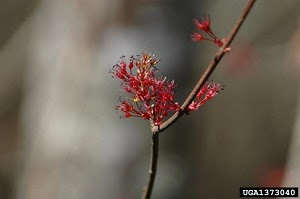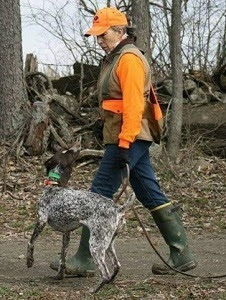From the New York State Department of Environmental Conservation
Get to Know New York’s Natives: Red Maple

With fall officially upon us tomorrow, there’s no better native to highlight this month than one of the first trees to showcase its autumn colors – the red maple (Acer rubrum).
Red maple is one of the most common tree species in the eastern United States, and red maple trees can be found all across New York State. This species’ tolerance of a wide range of site conditions makes it suitable for both natural and urban environments. Mature trees tend to reach a height of 40-60 feet with a full canopy of 30-40 feet in width.

This time of year, red maples are admired for their bright red shades, though yellow and occasionally even orange can be spotted as well. In winter, the sap of a red maple can be used to produce maple syrup. As winter ends, the red flowers and seeds of this species are a welcome sign of early spring. The seeds (samaras), buds, and twigs are treats for mammals, and the tree’s canopy is a popular nesting site for birds. In the forest products industry, red maple is valued for its lumber and pulpwood. The red maple is truly a tree for all seasons and species!
Check out more red maple fun at these links:
- Keep an eye on leaf change throughout the state this season with the I LOVE NY Fall Foliage Report, released each Wednesday afternoon.
- Ever wonder how to tell a red maple from a sugar maple? Read this spring 2007 piece from Northern Woodlands magazine to learn the tips for telling these two NY favorites apart.
Photos: (Top) Red maple leaves in autumn, photo by USDA Forest Service; (Bottom) red maple flowers in early spring, photo by Chris Evans, University of Illinois
Safely and Respectfully Sharing the Woods this Fall
With hunting and trapping seasons beginning soon, DEC encourages outdoor enthusiasts to respectfully share the woods and follow commonsense safety precautions. Most public lands in New York are open for multiple forms of recreation, meaning outdoor enthusiasts of all kinds share these lands. Whether you are a hiker, hunter, nature photographer, mountain biker or trapper, following a few simple measures can make your choice of recreation safe and enjoyable while sharing the outdoors.
DEC encourages every outdoor enthusiast to wear blaze orange, pink or another bright color, especially during fall and winter. Doing so allows individuals to be seen more easily and from greater distances. In addition, wearing bright colors makes it easier for Forest Rangers, Environmental Conservation Police Officers, or other rescue personnel to find you in the event of an emergency.

When not actively engaged in hunting, pet owners are encouraged to have their dogs wear a blaze orange, pink or another bright color vest or scarf. Dogs should stay leashed at all times. Trapping seasons are open throughout the fall and early winter. Although it’s a rare occurrence, traps set for furbearers (such as raccoons and coyotes) can also capture dogs that are not under control. Trapping is a highly regulated activity, and the regulations are strongly enforced. Trappers are required to take an educational course before getting a license, and DEC works closely with the trapping community to encourage trapping techniques that minimize risks to non-target wildlife and other animals like dogs. Keeping dogs on their leash is safer for the dog and for other people and gives pet owners peace of mind.
Hunting is among the most popular forms of wildlife recreation in the state, drawing nearly 700,000 New Yorkers and more than 50,000 out-of-state visitors. Hunting is a safe and economically important outdoor pursuit, helping to manage wildlife populations and promote family traditions, while fostering an understanding and respect for the environment. Hikers should be aware that they may meet hunters bearing firearms or archery equipment on public trails. Hunters should, likewise, recognize that they may encounter non-hunters while afield. Hunting accidents involving non-hunters are extremely rare.

Hunters looking for solitude can minimize disturbances associated with other forms of recreation by following a few tips. Before a season opens, while scouting for the perfect hunting spot or stand location, take the time to check if your planned location is a popular one. It’s best to avoid crowding other hunters. If your location is near a popular hiking spot, you may experience noise from other people who recreate outdoors. If your preferred spot becomes too crowded, it is a good idea to have an alternative location already identified. Find a destination by visiting the DEC website, checking out DECinfo Locator, or downloading the NY Fishing, Hunting, & Wildlife App.
DEC and the NYS Office of Parks, Recreation, and Historic Preservation (State Parks) encourage you to engage in responsible recreation during the ongoing COVID-19 public health crisis. Recreate locally, practice physical distancing, and use common sense to protect yourself and others.
Like this? Click to receive free EP Blog updates


